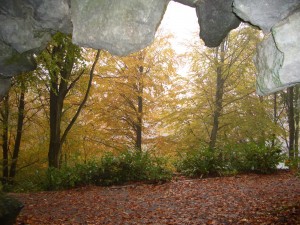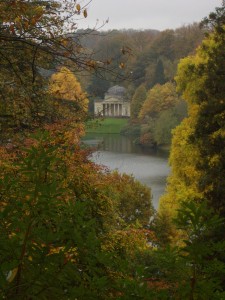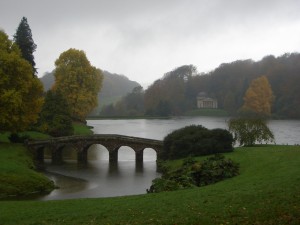Recently I found myself contemplating the nature of ‘classical’ landscapes, not from the comfort of home reading a book, but from the remains of a damp hermitage perched on a hillside at Stourhead.
Having felt much like Aeneas, having firstly sheltered from a torrential downpour in the grotto, I then commenced the walk up to the Temple of Apollo via the rock bridge and zig-zag path. As the rain increased to such an extent as to almost obscure the view, I found myself thoroughly soaking wet and took shelter halfway up in the hermitage.
It was here looking out at the view that something didn’t feel right about Stourhead, the problem not being the mix of classical architecture, or the loosely based classical references, but the view – or more precisely the lack of it.

Where was the view? All I could see through the rain was a mass of beech trees. Earlier on, following the route down from the house, brief glimpses of the pantheon and grotto would jump suddenly into view but be quickly replaced by an almost claustrophobic feeling of being enclosed by trees.
The original plan for Stourhead, dated 1779, shows the careful alignment of each element of the garden with views across, or to some point of interest. The 1770 panoramas show an ‘open landscape’ with buildings taking centre stage and carefully located with the wider landscape.

Although after 200 years the original overall concept of Stourhead remains, the loss of buildings and additional planting have changed Henry Hoare’s original vision and this raises the question of whether the original intention and eccentricity of the garden has been lost through subsequent owners’ ideas being imprinted on the landscape.

Today Stourhead remains a special place and a fine example of landscape architecture but would the removal of overgrown vegetation and thinning of trees enhance the experience? Should we even be concerned that the original intention has been lost? After all does not everything change with time?
Then again maybe it is time for a re-evaluation of our historical landscapes and a carefully considered approach to trying to regain what has been lost. Even if it does involve making potentially controversial changes.
Paul Strugnell